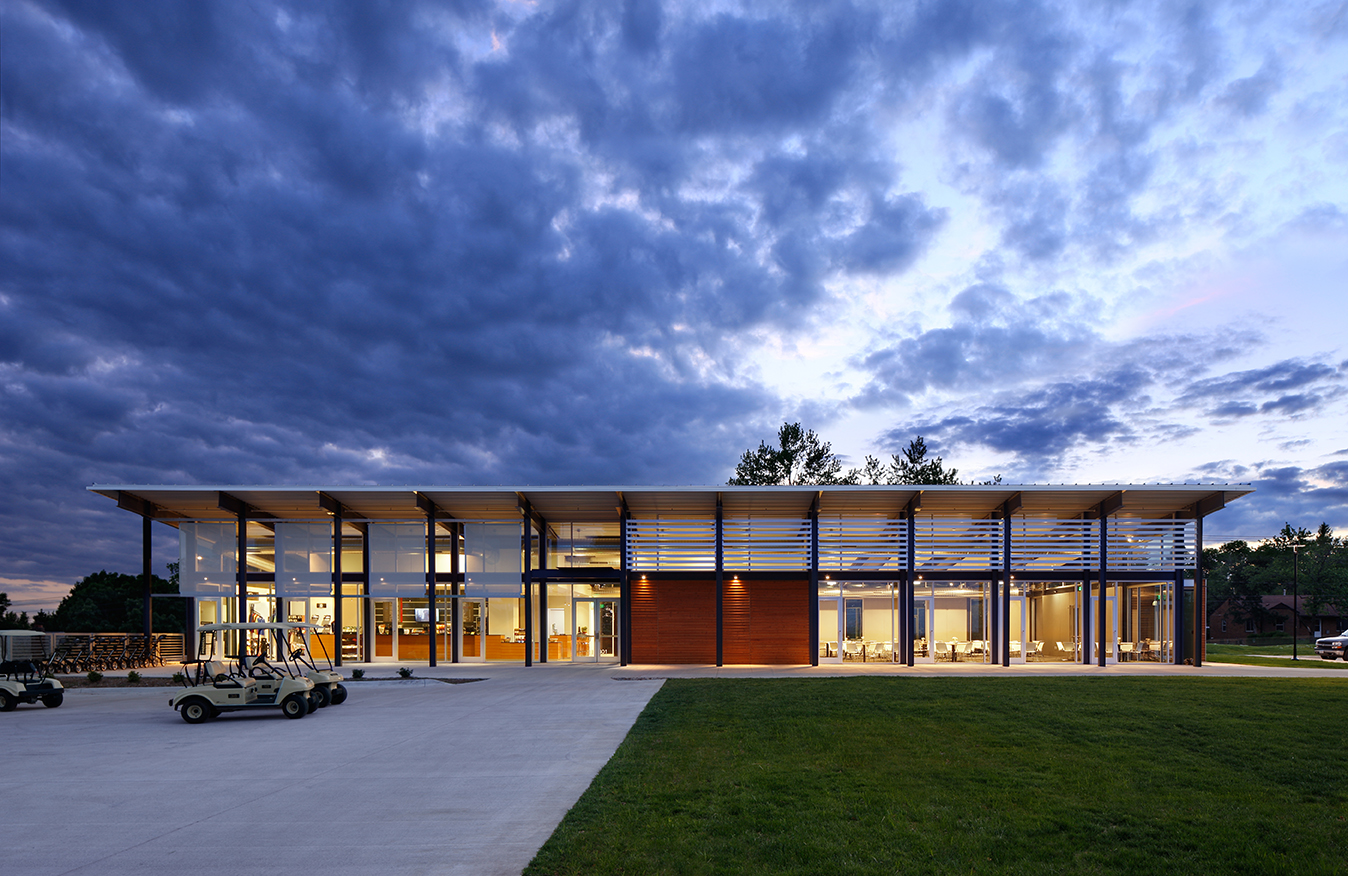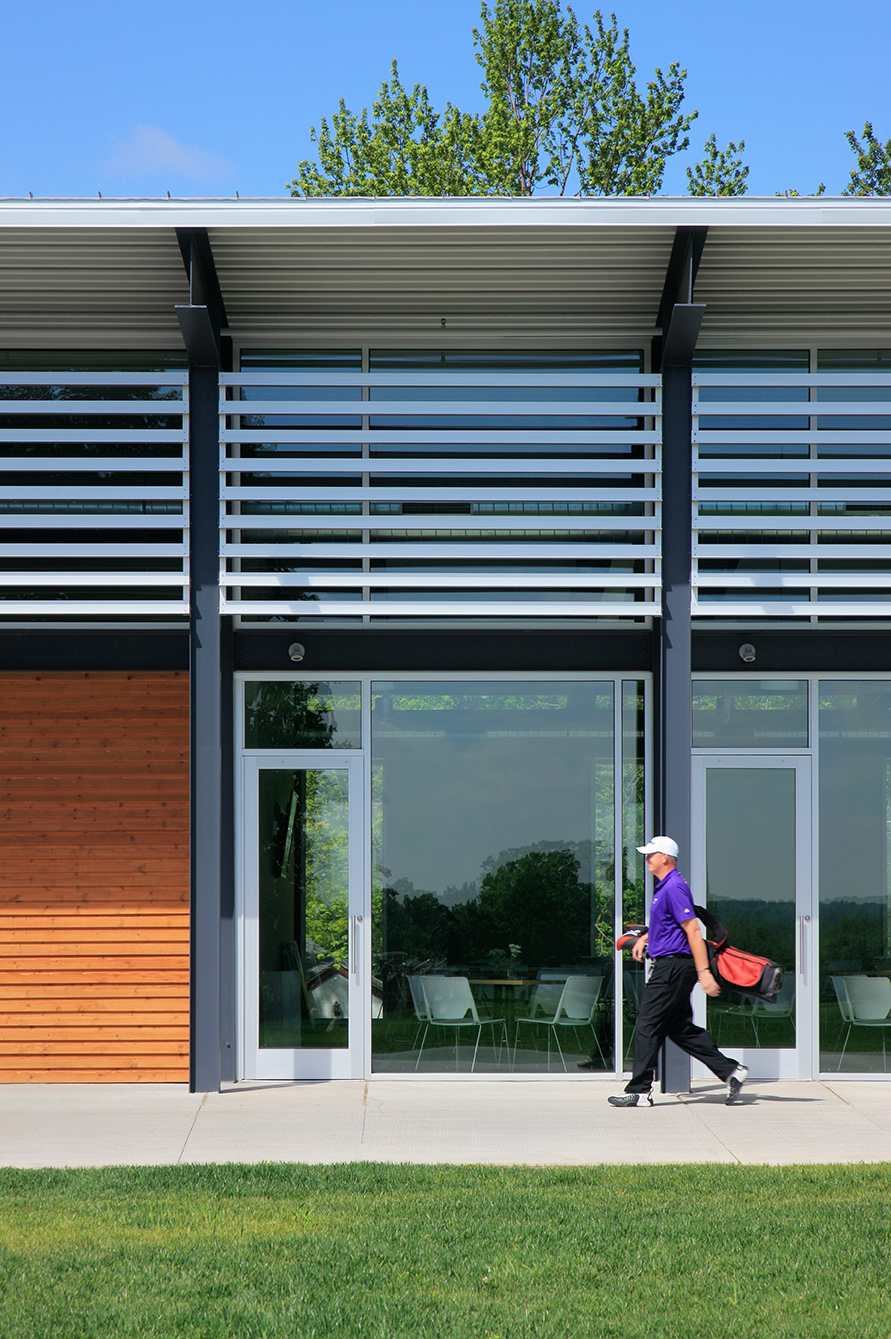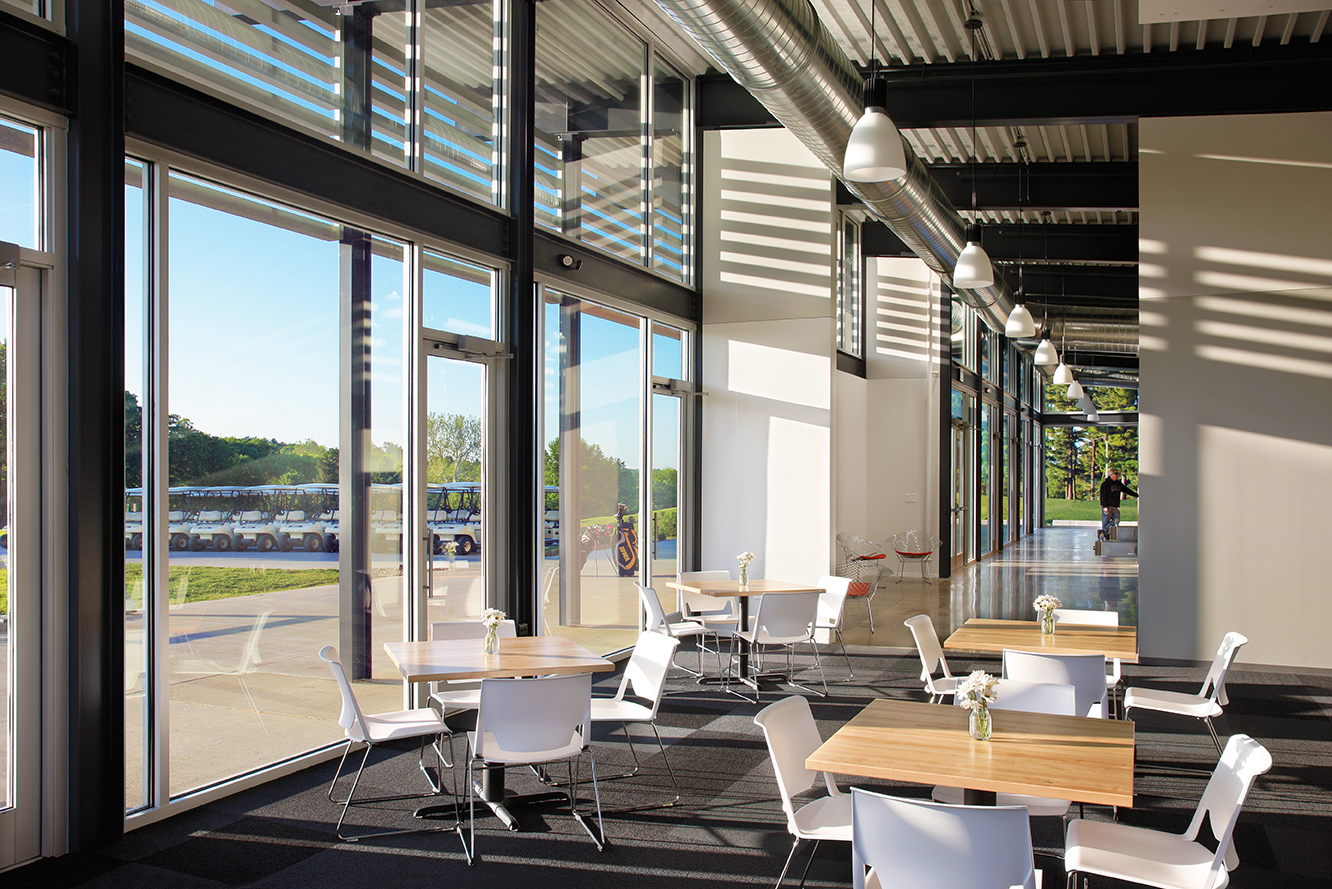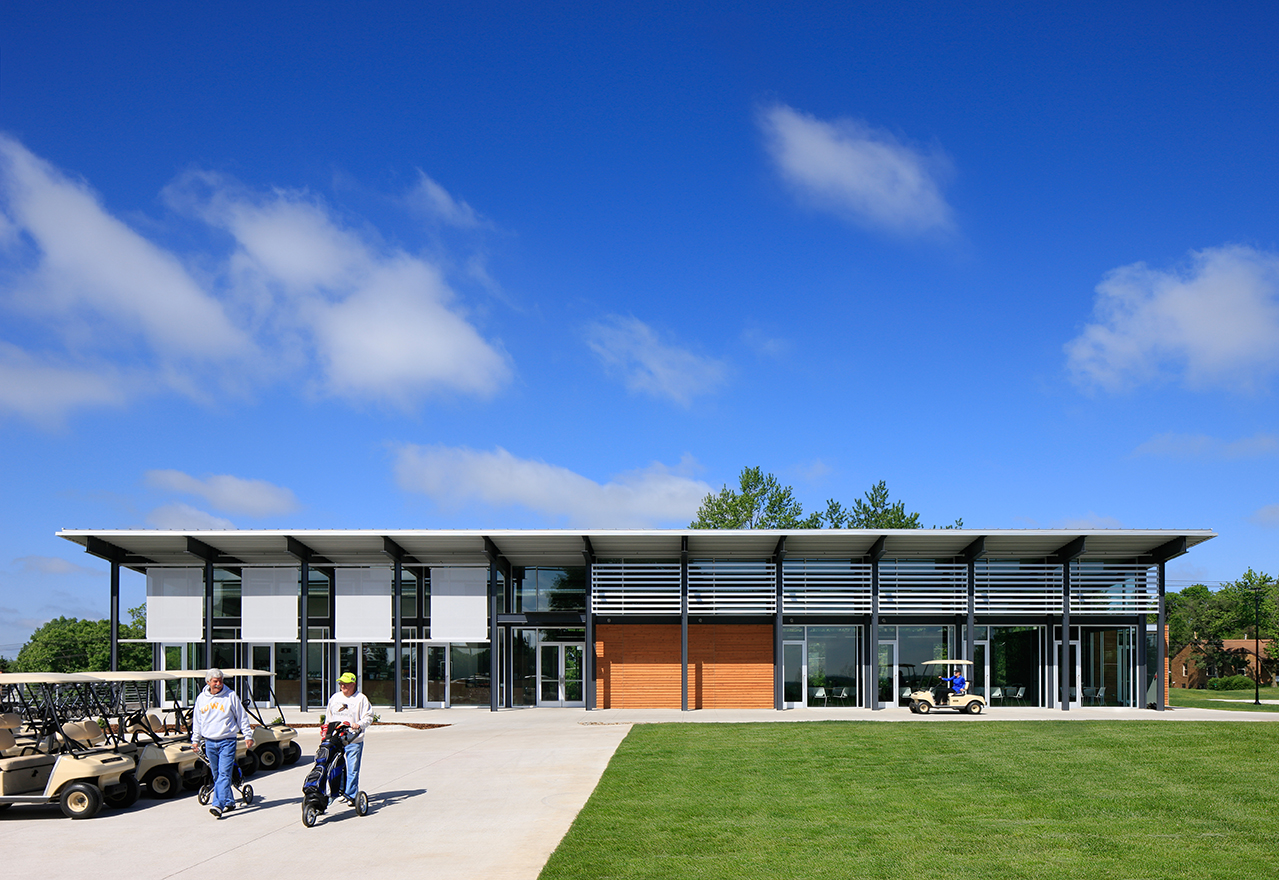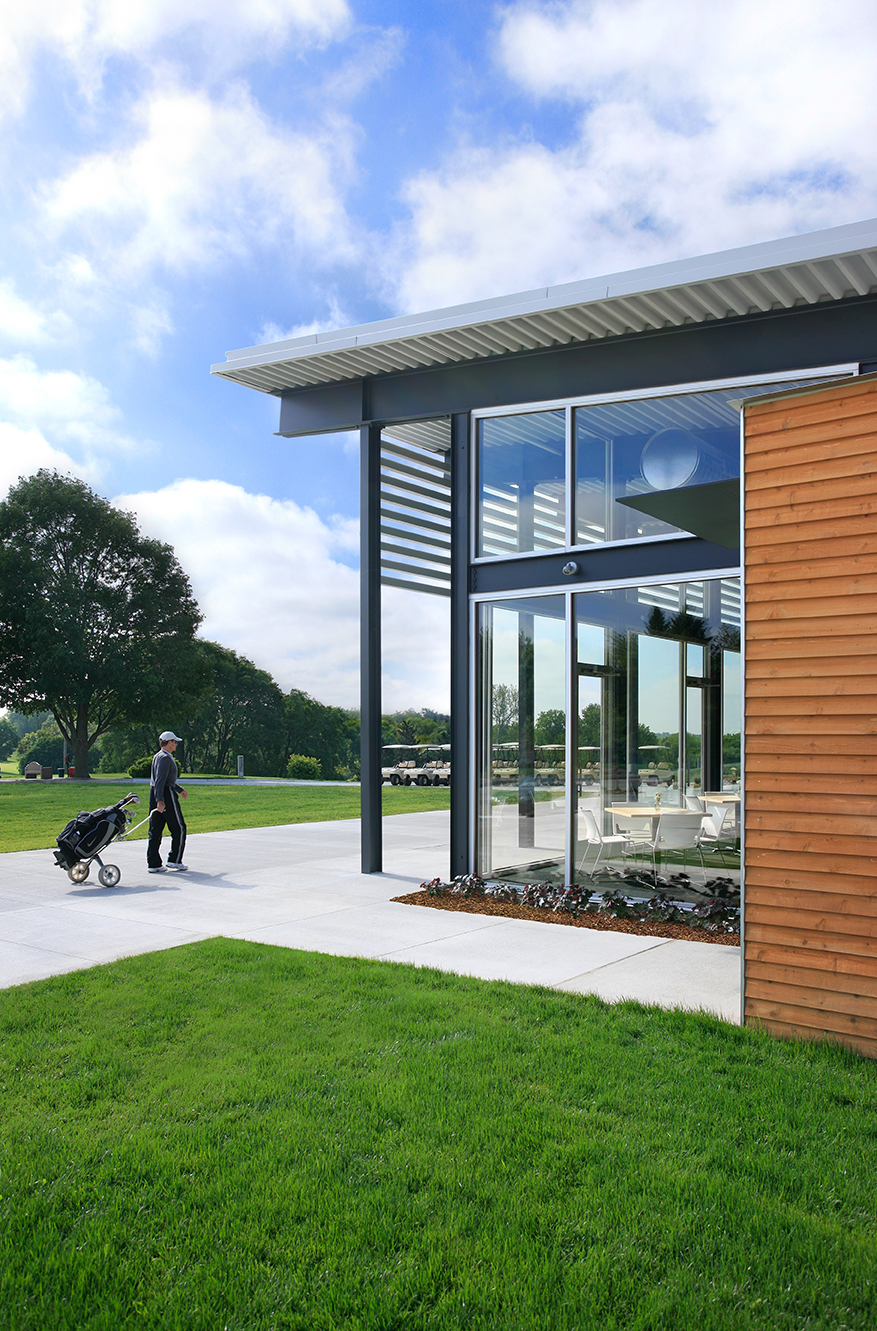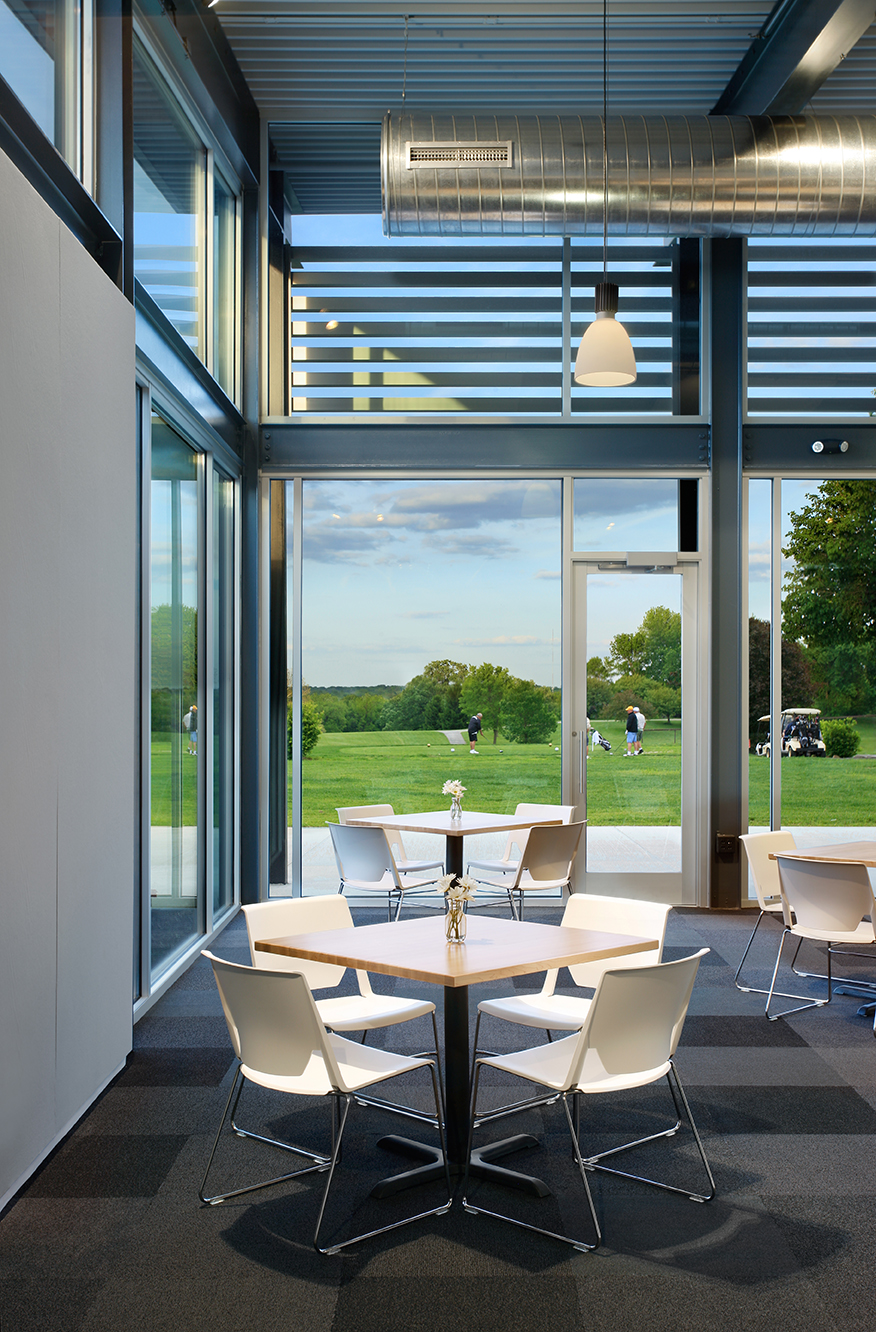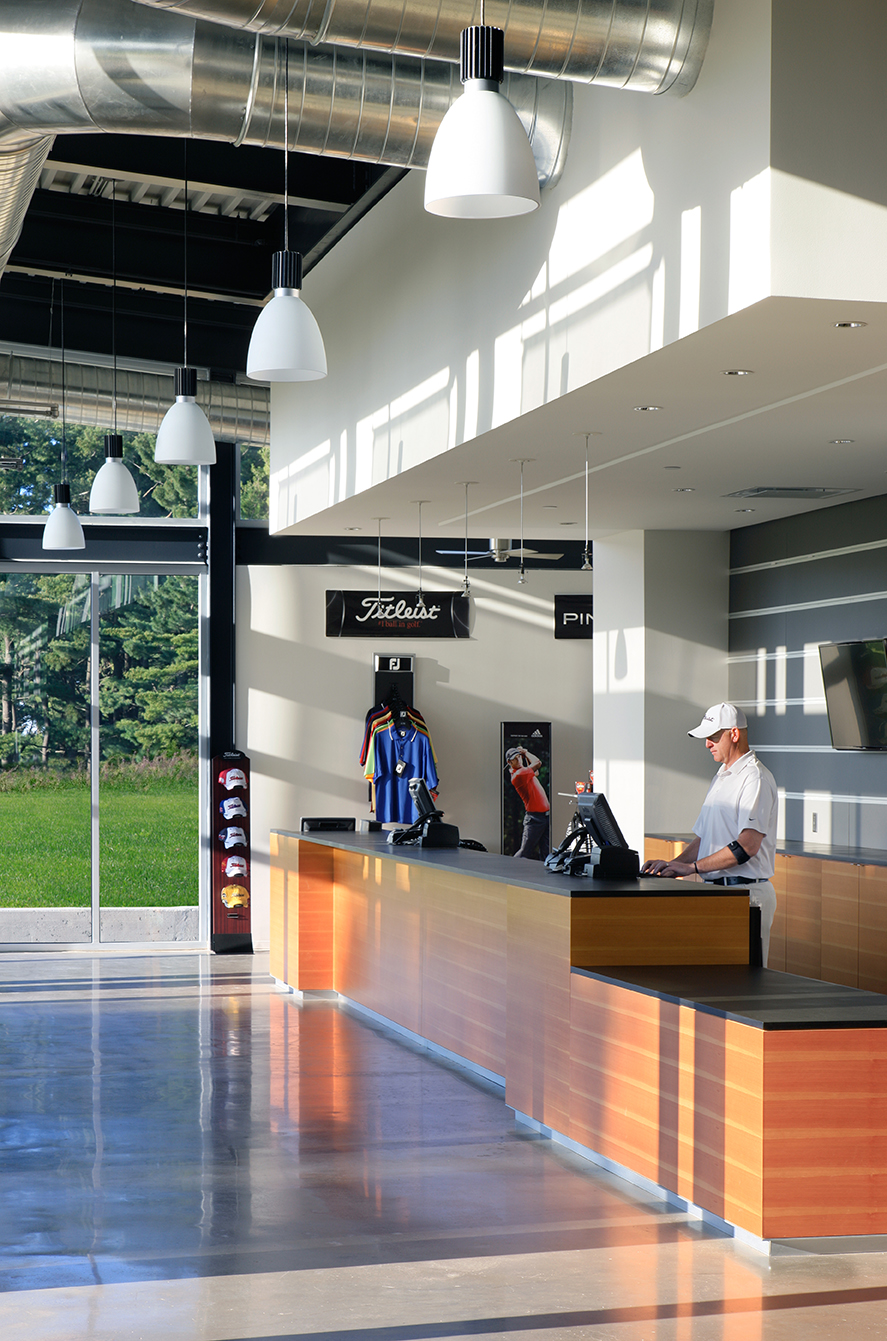Bright Grandview Clubhouse

-
ClientCity of Des Moines
-
SQ. FT.13,214
-
Budget$2,230,000
-
Market
-
LeedCertified
-
Year2012

-
2012 • American Institute of Architects, Iowa ChapterMerit Award
This municipal golf course, built in 1902, was badly in need of a makeover. The original clubhouse was in need of maintenance and had undergone many unsympathetic renovations over the years. City officials made the decision to construct a new clubhouse that would revitalize the neighborhood, become a much-needed community center, and change the image of the historic golf course for the entire community. This was all to be accomplished within a modest budget.
Contextually, the clubhouse is located on the westernmost boundary of the golf course and the building’s west elevation fronts a residential neighborhood. The clubhouse is oriented along the north-south axis to afford views of the golf course while addressing the residential street context on its reverse side. The building’s shed roof slopes down toward the residential district as a response to the scale and vocabulary of the neighboring houses. The east side of the building opens up to the golf course, both literally and metaphorically, through the wedge-shaped building form. The connection with the golf course is also achieved through the use of extensive glazing inset with doors allowing for access to an outdoor terrace that extends the length of the building. These doors set up an organizational rhythm that translates throughout the building. This rhythm is reinforced on the exterior with the introduction of tensioned fabric panels that shade the glass from the morning sun while allowing for views of the course. A horizontal louvered sunshade is also employed on the east elevation — the two sun shading strategies on this facade also define interior programmatic functions on the exterior of the building.
A simple steel structure, comprised of bays spaced at eleven feet, is articulated on both the interior and exterior of the building, and is complimented by lapped wood siding infill panels. A board-formed concrete foundation wall is exposed around the perimeter of the building, creating a plinth from which the steel structure rises. The lower level, a largely utilitarian space, provides storage for the course’s golf carts, while the main level houses the pro shop, bar, offices, and a dining room that can be used by the community for events. All of these functions work in concert to make the clubhouse a hub of activity for the neighborhood.
